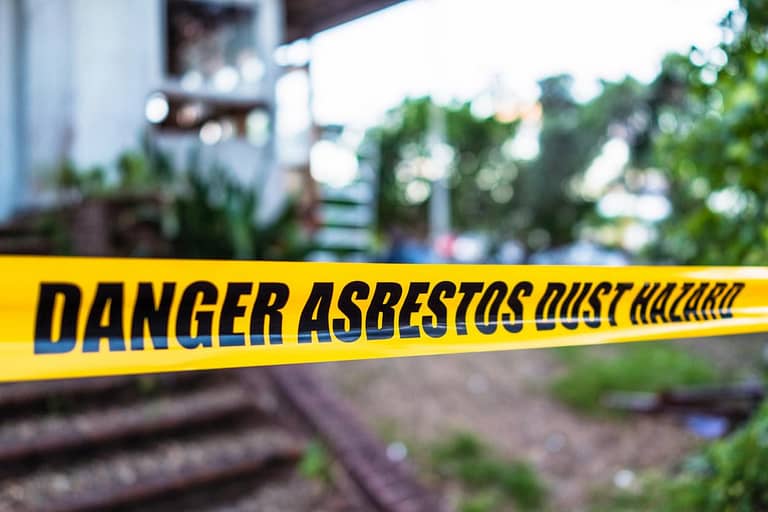Toolbox Talk - Asbestos in Construction
August 20, 2020

What is Asbestos?
Asbestos is the name given to a group of naturally occurring minerals. Asbestos differs from other minerals, in that it forms long thin fibers instead of crystals. It is used in many products because of their high tensile strength, flexibility, and resistance to chemical and thermal breakdown. Asbestos is used in insulation, fireproofing materials, automotive brakes, cement and wallboard materials, floor tiles and roofing material
Who is at risk of asbestos exposure?
The construction trades most at risk from asbestos are: insulators, plumbers, pipefitters, electricians, sheet metal workers, roofers, bricklayers, painters, and steel workers. Any construction worker may be exposed during maintenance, remodeling, renovation or demolition of older buildings.
How can you become exposed?
Disturbing asbestos materials may generate airborne asbestos fibers. Asbestos is only dangerous if it becomes airborne. To be a significant health concern, asbestos fibers must be inhaled over an extended period of time. As exposure increases, the risk of asbestos related diseases also increases. As long as asbestos containing materials are not damaged, the asbestos fibers do not become airborne and do not pose a health threat.
Asbestos is well recognized as a health hazard and its use is now highly regulated by both OSHA and EPA. Asbestos fibers associated with these health risks are too small to be seen with the naked eye. Breathing asbestos fibers can cause a buildup of scar-like tissue in the lungs called asbestosis and result in loss of lung function that often progresses to disability and death. Asbestos also causes cancer of the lung and other diseases such as mesothelioma of the pleura which is a fatal malignant tumor of the membrane lining the cavity of the lung or stomach.
How to protect yourself?
Before you disturb asbestos (loosen the fibers) you must have special training. OSHA requires a “competent person” to be designated for all worksites that will involve asbestos work. The competent person should inspect the jobsite regularly, be knowledgeable of personal protective equipment, and supervise the work to be done to ensure all safety measures are being taken to prevent exposure to asbestos.
There is no “safe” level of asbestos exposure for any type of asbestos fiber. Asbestos exposures as short in duration as a few days have caused mesothelioma in humans. Every occupational exposure to asbestos can cause injury of disease; every occupational exposure to asbestos contributes to the risk of getting an asbestos related disease. Where there is exposure, employers are required to further protect workers by establishing regulated areas, controlling certain work practices and instituting engineering controls to reduce the airborne levels. The employer is required to ensure exposure is reduced by using administrative controls and provide for the wearing of personal protective equipment. Medical monitoring of workers is also required when legal limits and exposure times are exceeded.
Sources:
